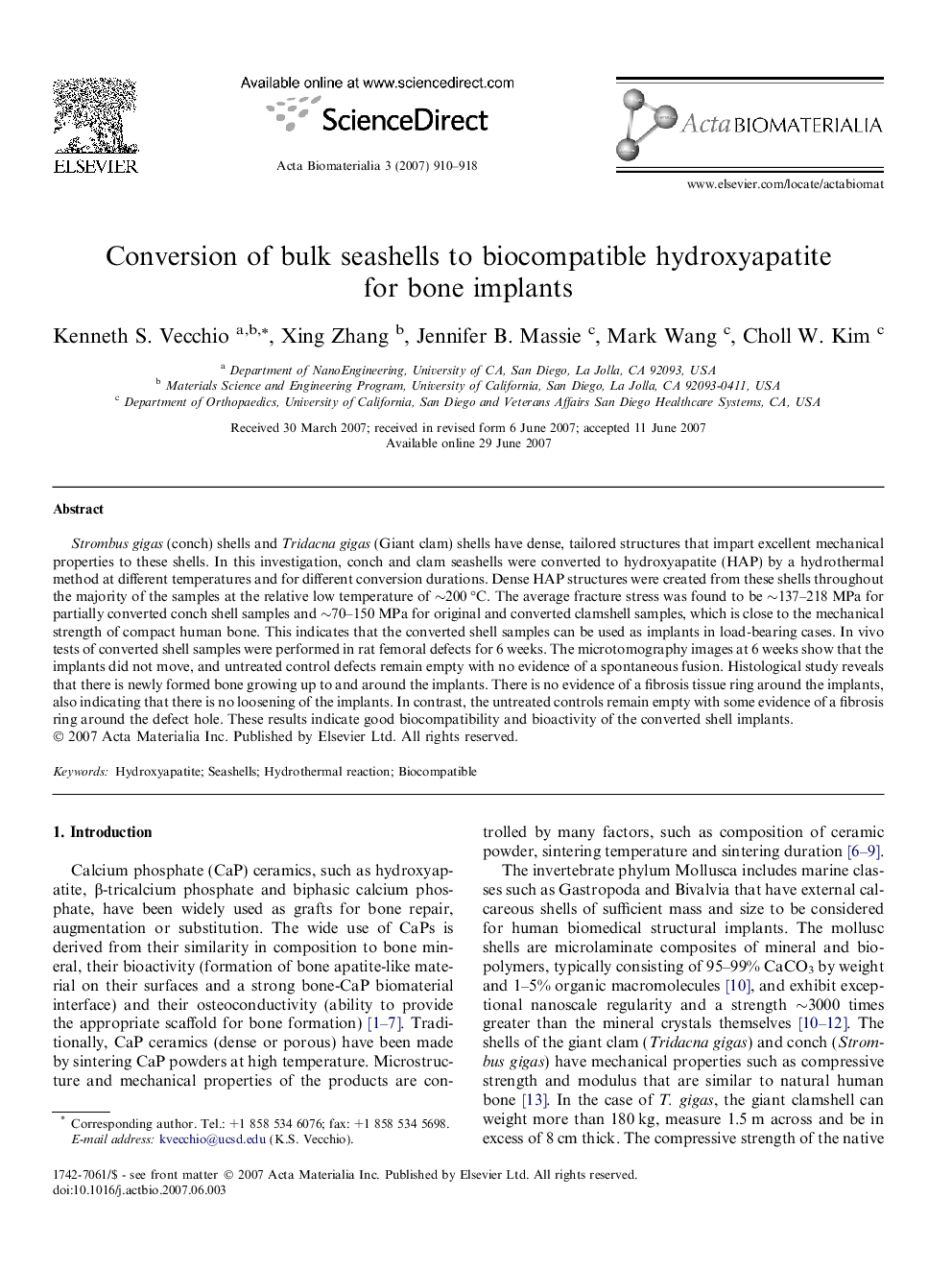| کد مقاله | کد نشریه | سال انتشار | مقاله انگلیسی | نسخه تمام متن |
|---|---|---|---|---|
| 2474 | 113 | 2007 | 9 صفحه PDF | دانلود رایگان |

Strombus gigas (conch) shells and Tridacna gigas (Giant clam) shells have dense, tailored structures that impart excellent mechanical properties to these shells. In this investigation, conch and clam seashells were converted to hydroxyapatite (HAP) by a hydrothermal method at different temperatures and for different conversion durations. Dense HAP structures were created from these shells throughout the majority of the samples at the relative low temperature of ∼200 °C. The average fracture stress was found to be ∼137–218 MPa for partially converted conch shell samples and ∼70–150 MPa for original and converted clamshell samples, which is close to the mechanical strength of compact human bone. This indicates that the converted shell samples can be used as implants in load-bearing cases. In vivo tests of converted shell samples were performed in rat femoral defects for 6 weeks. The microtomography images at 6 weeks show that the implants did not move, and untreated control defects remain empty with no evidence of a spontaneous fusion. Histological study reveals that there is newly formed bone growing up to and around the implants. There is no evidence of a fibrosis tissue ring around the implants, also indicating that there is no loosening of the implants. In contrast, the untreated controls remain empty with some evidence of a fibrosis ring around the defect hole. These results indicate good biocompatibility and bioactivity of the converted shell implants.
Journal: Acta Biomaterialia - Volume 3, Issue 6, November 2007, Pages 910–918